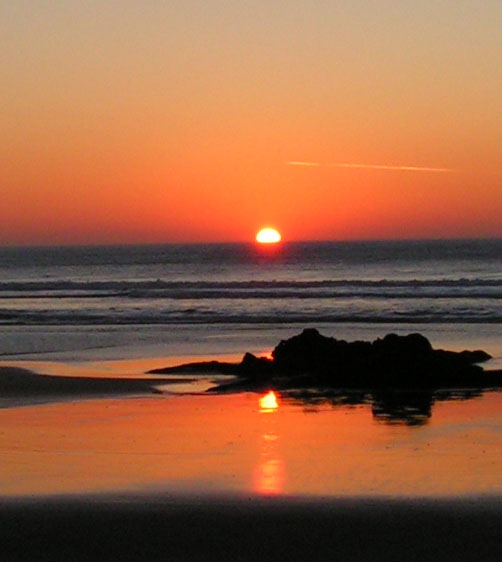
Sunset from Kehoe beach the sun shows little distortion as it approaches the horizon, photo by Sebastian Martin.
Novaya Zemlya-like sunset
On December 3 I was taking a group from the Exploratorium on a low-tide beach hike from McClures beach to Kehoe beach in Pt. Reyes National Seashore.
As we approached the end of the hike, the sun approached the horizon and we stopped to watch sunset with the hope of seeing a green flash.
The sun was a nice circle as it approached the horizon so it didn't look like a good night for seeing a green flash.

Sunset from Kehoe beach the sun shows little distortion as it
approaches the horizon, photo by Sebastian Martin.
As the top edge of the sun approached the ocean it appeared to me that the sun was becoming a rectangle with a rounded top.
We watched the sun go down but a glow as wide as the sun remained on the horizon for nearly two minutes after the top edge of the sun should have set.
(All of these images were taken by Hal Murray. I have not carefully analyzed these images to scale them all correctly but they are approximately correct.)
All further comments about timing refer to the next photo as the first photo of the sequence.
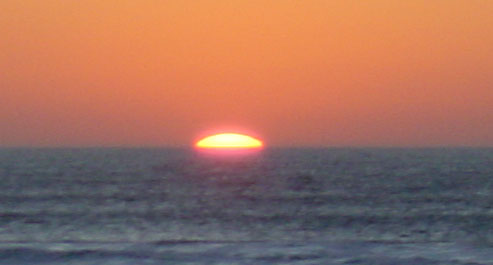
17:52:21 The top edge of the sun approaches the horizon.
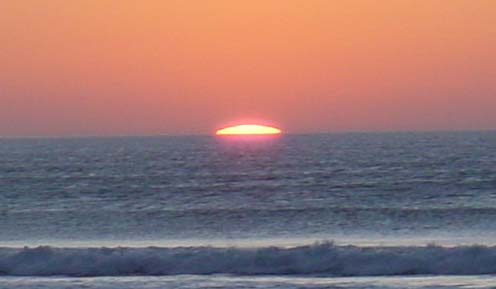
A little later.

17:53:04 45 The top edge of the sun just seemed to stay on the
horizon.
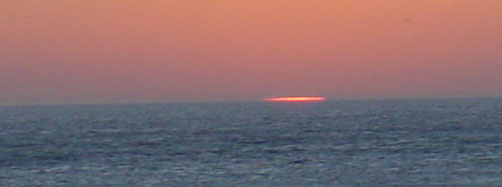
17:54:00 A minute later the glow still extended nearly the entire
width of the sun.
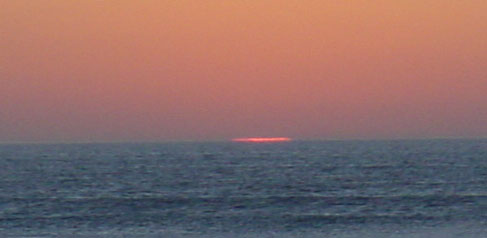
17:54:19 Almost a minute and a half and the glow was still
there.
The glow continued for tens of seconds longer than this last image before breaking up and fading.
There is a known effect called the Novaya Zemlya effect where a rectangular image of the sun appears above the horizon due to a wave guide effect in the atmosphere. I wondered if we were seeing a cousin to this effect?
I hypothesize that this long lasting light from the sun was probably carried around the curve of the earth by being refracted by temperature variations in the atmosphere as a function of height.
|
Scientific Explorations with Paul Doherty |
|
21 November 2006 |